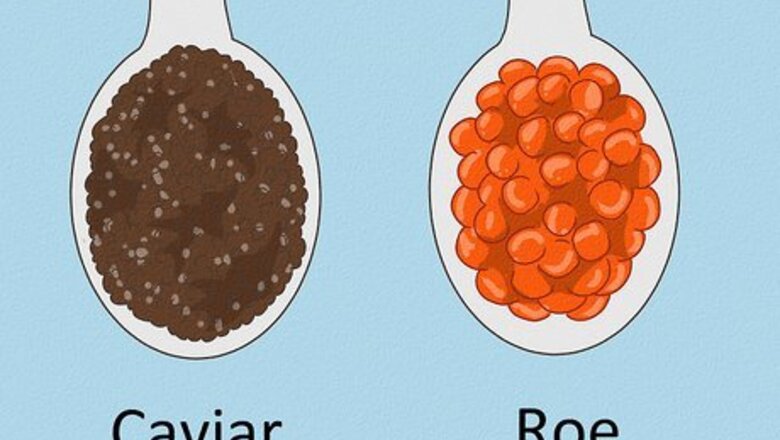
views
- Caviar is salt-cured, unfertilized eggs from sturgeon fish, and roe is unfertilized eggs from any fish (salted or unsalted, cooked or uncooked).
- Paddlefish roe is the closest substitute for real caviar, although roe and caviar taste very similar and can be used nearly interchangeably.
- Caviar can range from $50 to over $800 per ounce (28 g) depending on the quality and rarity of the sturgeon, whereas roe can cost as little as $10 per ounce.
Caviar & Roe Definitions
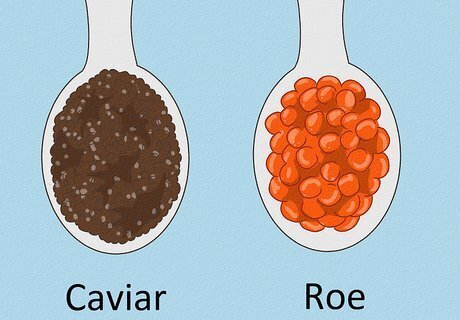
Roe refers to fish eggs while caviar is fish eggs from sturgeon, specifically. Technically, all caviar is a kind of roe, but roe can only be called caviar if the eggs are unfertilized, come from a fish in the sturgeon family (Acipenseridae), and are salt-cured (even sturgeon eggs are still considered roe until salted). Roe can be cooked or uncooked and salted or unsalted, unlike caviar which is always salted and uncooked. Historically, caviar came from sturgeon in the Black and Caspian Seas. Today, caviar comes from wild and farmed sturgeon all over the world. Popular fish for roe include salmon, flying fish, lumpfish, capelin, trout, paddlefish, and whitefish. Technically, roe can be eggs from other marine animals like shrimp, scallops, or squid, but these are eaten less frequently than fish roe.
Best Caviar Substitutes
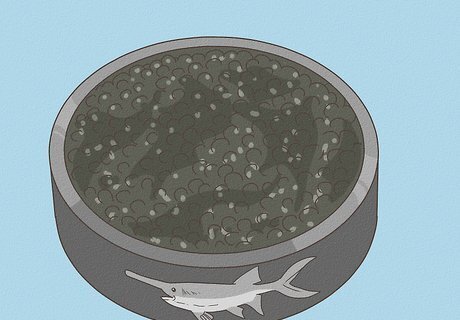
Paddlefish roe is the closest to true caviar. Paddlefish are close cousins to sturgeon, and they produce eggs that are a similar size and color. Paddlefish roe makes a great introduction to roe and caviar because of its delicious flavor and lower price point than real sturgeon caviar (a 1 ounce (28 g) tin can cost around $30 to $40). Other popular roes used as caviar substitutes come from salmon, whitefish, trout, and many other fresh and saltwater fish.
Flavor Comparison
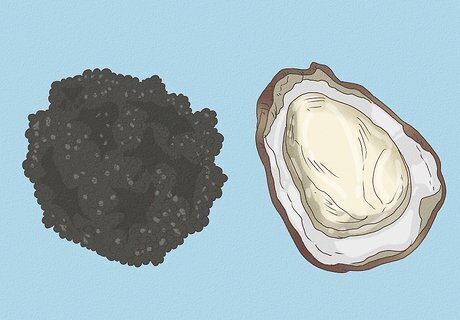
Caviar has a briny flavor that tastes like the sea, similar to oysters. The best caviars taste salty and seafood-y at the same time, and the flavors are subtle and delicate. High-quality, fresh caviar doesn’t have a super fishy smell like you might encounter at a seafood counter or market. The texture of caviar is firm but delicate. It melts in your mouth as it’s eaten, becoming smooth, creamy, and almost butter-like.
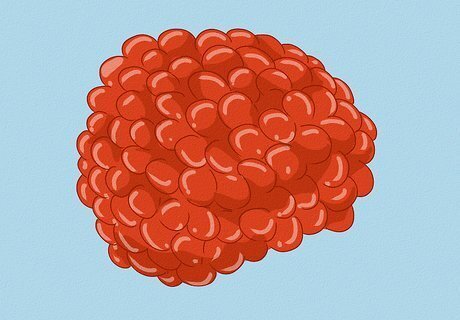
Roe tastes about the same as caviar, but has a softer texture. In terms of flavor, caviar and roe are nearly interchangeable. However, roe eggs are a bit softer and feel like they’re popping or bursting in your mouth when you eat them. This is especially true for salmon roe (also called red roe or red caviar). When you’re comparing roe vs. caviar, caviar is almost always black while roe can be black, red, orange, or yellow depending on the fish it comes from.
Cost Comparison
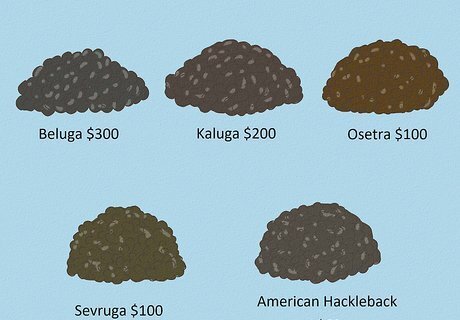
Caviar starts between $50 and $70 per ounce (28 grams). Caviar price is affected by its grade (quality) and the fish it comes from. Grade 1 caviar consists of firm, large eggs of a uniform size and is pricier than Grade 2, which features less delicate and uniform eggs. While average-quality, domestic caviar won’t break your bank account too much, the highest-quality, rarest, imported stuff (like Iranian beluga caviar from the Caspian Sea) can easily cost $800 or more per ounce. The most common and popular caviar types include: Beluga (Caspian Sea): Caviar from the beluga sturgeon is the finest and priciest, ringing in around $300 per ounce (28 g). It’s illegal in the US due to overfishing in the Caspian Sea. Kaluga (Argun River): This is the second-best to beluga caviar (it’s sometimes called “river beluga”). An ounce (28 g) can cost around $200. Osetra (Caspian Sea): Caviar from osetra sturgeon is versatile, accessible, and costs around $100 per ounce (28 g) or higher. Sevruga (Caspian & Black Seas): This is the most common and affordable caviar, with the cheapest varieties coming in around $100 per ounce (28 g). American hackleback (Mississippi River): American caviar is farmed in lakes and rivers with varying flavors, textures, and sizes and costs around $60 for an ounce (28 g). Hackleback is the most common type.
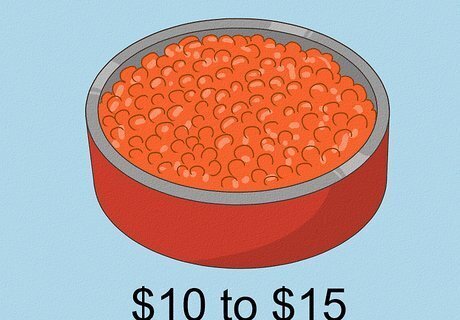
Roe is significantly cheaper than caviar. Like caviar, the exact price will vary based on the quality and type of fish. However, it’s less expensive because of the wider variety of fish it comes from, the larger supply, and the ability to source it more locally. If you’re looking to dip your toes into the world of fish eggs, a tin of trout roe can cost as little as $10 to $15.
US Caviar Labels
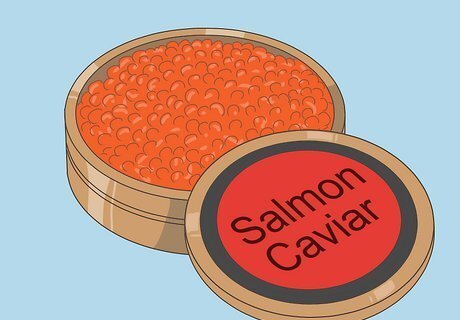
The FDA allows roe to be called “caviar” if the source fish is on the label. For example, salmon roe can be marketed as caviar in the United States as long as the label clearly states that it’s “salmon caviar.” While caviar connoisseurs would know such a product is roe and not real caviar, those who are new to fish eggs might be misled by the description. Outside of the US, it’s generally assumed that “caviar” refers only to salted sturgeon eggs, and the word “caviar” is unlikely to appear on roe labels.
Serving & Storing Caviar
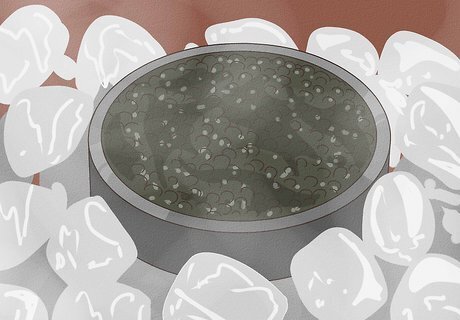
Serve caviar plain on a bed of ice as an hors d’oeuvre. Place your tin or jar of caviar on ice and eat it with a caviar spoon made of glass, ceramic, or mother-of-pearl (metallic utensils can alter the natural flavor of the caviar). Take a small portion no bigger than 1 teaspoon (5 grams). Instead of chewing it outright, let it sit on your tongue and spread around your mouth the experience the full flavor. Some connoisseurs recommend letting your spoonful of caviar warm up to room temperature before eating it.
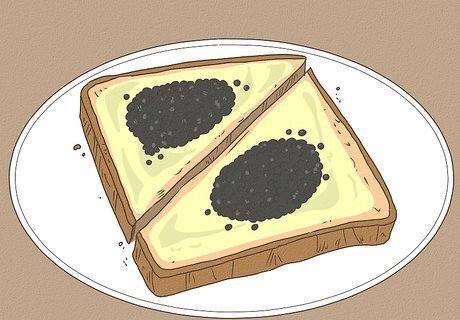
Try spreading caviar on buttered bread or toast points for a simple treat. Place a small spoonful on a thin piece of toast or a slice of a baguette and enjoy! Steer clear of unbuttered bread or plain crackers, since these can absorb too much flavor from the caviar itself. In general, larger eggs require a larger piece of bread. Only serve 1 or 2 different caviars at a time so your guests can fully taste and enjoy the flavors of each type. Alternatively, try it on a blini with sour cream and fresh dill or whip up some crème fraîche to spread on a cracker and top with caviar. Caviar also makes a great topping for pasta, mashed or roasted potatoes, raw oysters, or a lean cut of steak.
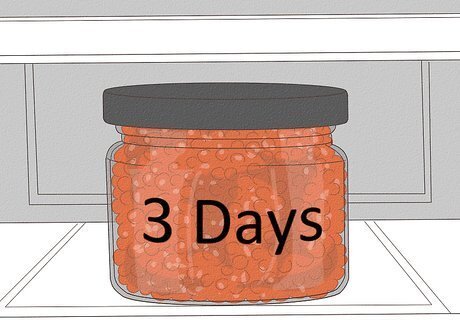
Finish your caviar tin within 3 days. Like all seafood dishes, caviar is best when it’s fresh, so eat it up as soon as possible after opening. Reseal your caviar tightly and store it in the coldest part of your refrigerator for up to 3 days. Refrigerate unopened jars for up to 2 weeks. Try not to freeze your caviar if you can help it. Freezing will extend the shelf life up to a year, but the flavor and texture won’t be as good once it thaws. Defrost frozen caviar in the fridge (never on the counter).
Caviar & Roe Nutrition Benefits
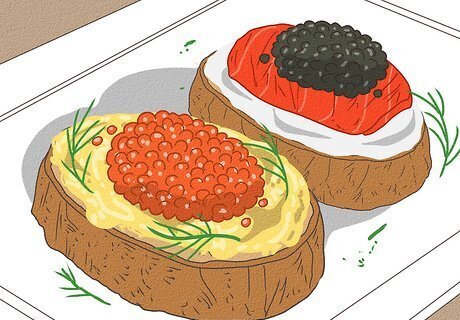
Salmon and roe are both packed with Vitamins B12, A, C, E, and more. Even a tiny serving is loaded with nutrients, making fish eggs a powerhouse food. A small spoonful has about 236% of the daily recommended amount of Vitamin B12, which is essential for making protein, red blood cells, and nerve cells. It’s also got Omega-3 fatty acids, which stabilize your mood, memory, and help protect your brain cells. Caviar also contains high levels of Vitamins A and E, which are great for your skin, and Vitamin C, which supports your immune system. Calcium, zinc, magnesium, and iron are also plentiful in a tiny scoop of roe or caviar. Calcium is especially important for your bone health.

















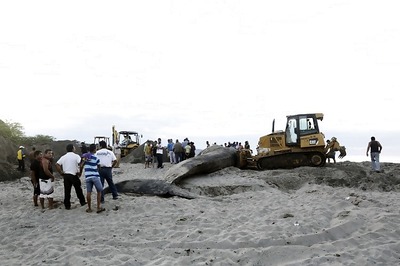
Comments
0 comment